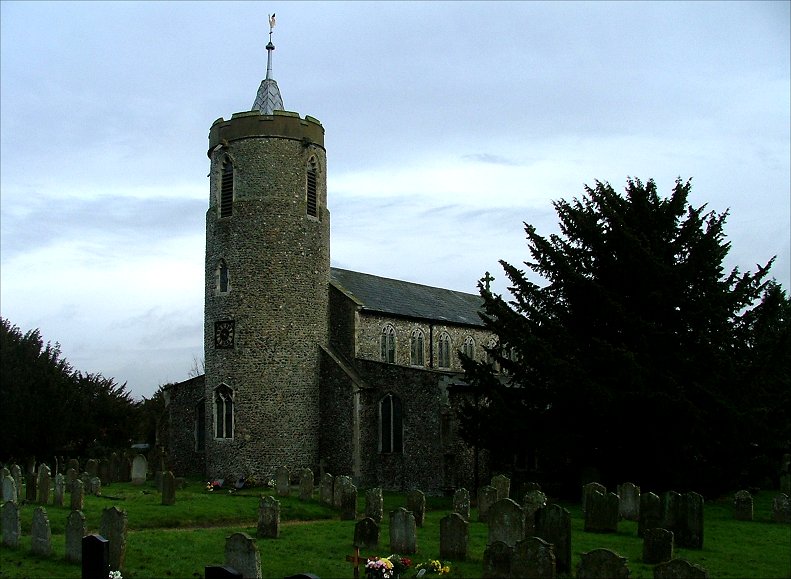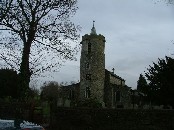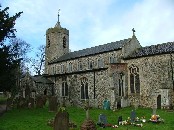| |
|
St Mary,
Long Stratton
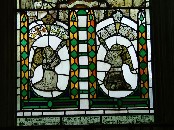 |
|
St
Mary will be familiar to anyone who has endured
the tiresome A140 from Ipswich to Norwich, which
seems to have been designed specifically to push
drivers beyond the edge of reason. Long Stratton
straddles this hellish road for a distance of a
couple of miles, and it would be just another
put-upon village if it had not been designated
the central settlement and headquarters of the
new South Norfolk District Council area in 1974. Since then,
Long Stratton has grown beyond measure, becoming
a small town with a shopping centre, a
superstore, and all the usual facilities. It is
actually a rather pretty place, if it wasn't for
that blessed road, and St Mary is its focus.
|
St Mary
suits Long Stratton well, because like many Norfolk
churches it was in a bit of a state by the early 19th
century, and the Victorians turned its wide aisled and
clerestoried nave into a crisp, clean, urban space which
would be quite at home in the middle of a large town like
Norwich or Ipswich. This is not to say that it is not a
pleasant, well-kept building; and, of course, it has the
adornment of that large round tower, which rears up above
the road. And, unusually for an town church of
evangelical temper, it is accessible to visitors, for
which the parish are to be commended.
You get
the key from the hairdressers across the road.
"That'll be five pounds for half an hour!"
quips the nice lady, to which, of course, you immediately
reply "But it'll take me that long to get back
across the road!".
It
doesn't, but it can feel as if it does. The traffic that
was roaring along four lanes of a dual carriageway a
couple of miles to the south is now here, being funnelled
through the high street, and the drivers are not happy.
They are certainly in no mood to let pedestrians cross.
But eventually, you manage it, and enter the pleasantly
lush graveyard.
The tower
is Norman, and this was an aisled church even before the
Black Death. Long Stratton has always been a significant
place. And, despite the attentions of the restorers,
there are some intriguing survivals. This is one of those
churches that installed a job lot of medieval and
continental glass bought from a Norwich merchant in the
19th century, and it fills the east window. The Flemish
panels are in rather poor condition, but that in the
centre appears to be the Baptism of Christ. The English
glass is probably more interesting. A figure with an
added female head holds a sheep. Is it St Agnes, or
Christ the Good Shepherd, or someone else entirely? There
is a fine bearded head, probably of an apostle. What
wonderful curly hair he has!
 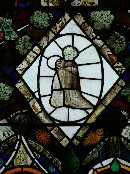 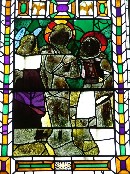 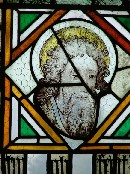
Perhaps
the most important artistic survival here is the
intricate font cover. It dates from the early 17th
century, and builds to a crown of curling openwork. The
legend, in gold around the base, is from St John's
Gospel: Except a man be borne of Water and of the
Spirit he cannot enter the Kingdom of God. Behind
the font, the doorway to the tower stairs is set at the
top of a small flight of concentric stairs.
High on
the west wall are two hatchments and the royal arms of
George II. Curiously, there is also a clock. It is
unusual to find a clock inside a church, at least in such
a prominent position. There's another one at Brancaster,
away to the north-west on the coast. Supposedly, they
were there for the benefit of the Preacher, although you
can't help thinking he'd have got a bit fed up with
people sneaking a glance back over the shoulder if he
went on for too long.
The
massive monument in the chancel is to Sir Edmund and Lady
Mary Reeve. Sir Edmund was an important parliamentarian
politician during the English Civil War and Commonwealth.
He didn't live to see the Restoration, and has the smug
air of someone who knows that he died on the winning
side.
| Long
Stratton's most famous survival, and perhaps the
very reason that you might have used Google to
find this page, is the Sexton's wheel. This is
displayed in a glass case near the back of the
church. It is made of iron, and revolves on a
spindle. Its exact function isn't entirely
certain, but it seems to have been used to
determine which day of the week a parishioner
would start a fast. This was decided by which of
the Marian Feast days, represented by strings
hanging from the wheel, was selected by catching
when the wheel was spun. Whichever day the Feast
fells on that year, that was the day the fast
began. Curiously, there are only two of
these wheels in England, and the other is barely
ten miles away at Yaxley, just over the Suffolk
border.
|
|
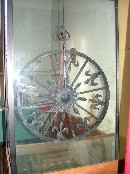 |
|
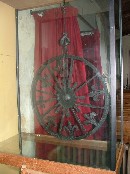 |
Simon Knott, February 2006
|
|
|

